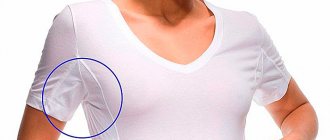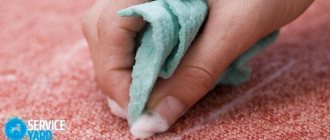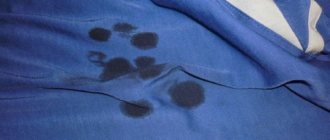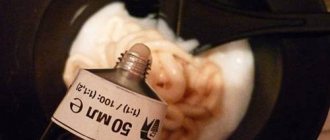Shoe polish provides care for leather shoes and their sparkling shine. This product works great with shoes, boots, and boots, but when interacting with clothing it can be a difficult problem in removing a characteristic stain. It is quite difficult to remove shoe polish, but there are still ways to help remove the cream from the fabric without leaving a trace.
Using shoe polish
How to Remove Shoe Polish from Carpet
Today, almost every apartment or house has such an important decorative attribute as a carpet. This is not surprising: it perfectly emphasizes the designer's style and makes the room more elegant and bright. However, there are many not entirely positive consequences associated with carpet, such as cleaning and cleaning. At the moment, there are also a huge variety of carpet cleaning and washing products, but their effect raises some doubts. And what can I say: they don’t all clean even the lightest stains and other contaminants well enough, and it’s not worth talking about more severe cases. People have several useful methods for cleaning carpets.
The need for dry cleaning services
Professional chemical cleaning is needed only if the housewife is unsure of her abilities, as well as if she has fears of ruining an expensive item during home washing. Modern chemicals carefully and safely care for the product under the supervision of specialists.
Shoe polish stains do not want to be washed off easily and leave clothes. You will have to work a little to restore its former cleanliness and tidiness. Products for removing such stains are not labor intensive, but require speed to immediately remove stubborn dirt from shoe polish.
We hope that now you are savvy with the necessary information and will be able to wash shoe polish from your clothes at any time.
Another great article: How to Iron Bedding.
If the cream is liquid, remove it with a dessert spoon.
First of all, if the contamination occurred with liquid cream, then there is no need to worry. First of all, you need to immediately remove any remaining liquid shoe polish using a spoon or other available means. Try to do this as carefully as possible, without smearing anything around the edges, and to avoid liquid cream getting deep into the fibers, after which it will be more difficult to wipe them off. And if the cream is hard or has already hardened significantly and become crusty, then scrape off the remains with a knife, then vacuum it thoroughly to remove any remaining dust and other crumbs of the cream. After this, take a white (or just a light, colorless) rag or a kitchen towel, soak it in nail polish remover (it is advisable to choose one with the least amount of acetone), but in any case, this is not so important and any product will do. Rub the remaining stain using a rotating motion. In this case, the stain should disappear. But if this suddenly does not happen (the carpet is too fluffy or the rag is poorly cleaned), then try adding a little special substance to remove such stains from carpets. Such liquid substances are sold in every industrial or household store. It is advisable to always keep such funds in stock just in case.
What you need to know
Due to its fatty coloring consistency, shoe polish is firmly fixed in the fibers of the fabric, which makes the task of removing it very difficult.
This type of contamination can confidently be called one of the most difficult to remove. To remove it from clothing yourself, you must act immediately. IMPORTANT! Dried, outdated blots from shoe polish without professional cleaning are not at all easy to remove.
Do not try to randomly rub the contamination over the surface of the material. Stock up on cotton pads and swabs. Using very gentle movements, remove the top layer of cream, moving from the edges to the center of the stain. If the blot has already dried, try to scrape it off with the blunt side of a knife without damaging the fabric itself.
The further removal process will depend on the quality of the material itself and the complexity of the contamination.
IMPORTANT! Before processing your product, read the information on its tag about the composition of the fabric and the required temperature conditions. Delicate materials, as well as synthetics, cannot be washed at water temperatures above 40 degrees.
During the cleaning process, it is necessary to place several layers of paper napkins under thin fabrics.
Advice: before applying any cleaning agent to the material, test it on the inside, in some inconspicuous place, for example, a hem or seam.
Detergents can damage expensive carpet
However, you should not resort to such substances right away, because, despite their fairly effective work, you can damage the delicate fibers of your expensive carpet. They do a really good job, but they contain very rough elements that interact mercilessly with your carpet. Therefore, when using, be sure to carefully read the instructions and follow them. Do not use products “by eye”. If you don’t have such a product at hand, and you need to clean the carpet urgently, then another effective way is a mixture of homemade laundry detergent and water. To do this, take the most common powder without bleach and add water to it to make a semi-thick mixture. Rub what you have into the stain until it disappears. Then wipe the carpet with a napkin or cloth. These simple ways can keep your carpet clean.
How to get rid of old shoe polish stains
How to remove shoe polish if the stain is already old.
- Buy purified Galosha gasoline at a hardware store. Gently use a cotton swab to wipe off the dirt. Next, you need to prepare a mixture of ammonia and denatured alcohol taken in equal parts and a small amount of 72% laundry soap grated on a fine grater. Rub the resulting mixture into the problem area in a circular motion.
When finished, wipe off the dirt with clean napkins; if necessary, repeat the process again. After all, wash the item by hand or in the washing machine. - Old stains can be removed well with turpentine. Soak a cotton swab in it and wipe the dirt with it. Additionally, prepare a slurry from equal parts of acetone and turpentine, adding starch. Apply it to the stain and wait a few minutes. Then wipe everything off with clean napkins. If desired, repeat the entire process again, after which you need to send the item to the wash.
Industrial cleaners
In the assortment of household chemicals aimed at cleaning marks of various nature from items of clothing, you can choose an effective option.
An important criterion is the type of textile. The type of pollutant and the degree of stain resistance are taken into account. Types of recommended cleaners:
- AXEL-6. Aerosol Oil amp; Grease Remover with a universal spectrum of action against oil stains. Spray onto a soft piece of cloth and rub off the oily print towards the center. After treatment, the sponge is moistened with detergent and the surface is wiped.
- Oil Stain Remover. Refers to environmentally friendly products with a citrus base. Effectively cleans technical oily types. After applying to the stain, leave the composition until completely dry for about 8 hours. The resulting powder is removed with a brush.
- Beckmann. This series of stain removers offers a special type for oil stains. It is recommended to use it for products that can be washed after treatment. It is also practiced to clean items from the group of outerwear that are undesirable to wash frequently. Suitable for colored items. Not for use on skin.
- Gold Oxi from the line Thanks to its thick consistency, it is easily distributed over the fabric. Does not require a long time, removing even large oil deposits in a few minutes. Safely cleans colored and white textiles.
When working, ensure ventilation of the room, protect hands with gloves.
Oily stains appear quite often on different types of textiles. It is easier to deal with them in the first moments after their appearance, since many available substances absorb the oil.
We suggest you read: How to clean gold and diamonds at home yourself?
Do not despair if you notice already dried marks or traces from varieties that are difficult to breed. Among the proven methods, it is possible to select the most effective and safe ones.
Traditional methods
«>
A mixture of salt and water can cope with stains on shoes, furniture, and clothing. Moisten the stain with the salt mixture and rub with a napkin from the edges to the middle. Let it sit for 30 minutes, then wash it in cold water, and then in warm water. If the berries end up on the furniture, sprinkle the dirt with salt and then remove it with a clean cloth.
«>
Dirt from peach and apricot is wiped off with lemon juice. Squeeze citrus juice directly onto the stain, then pat the area through cheesecloth.
«>
Traces of currants on colored fabric can be reduced using this technique:
- Turn the product inside out.
- Dissolve 1 tsp in a cup of water. citric acid.
- Treat the contaminated area and leave for 30 minutes.
- Wash this area.
- Instead of acid, you can pour in 1 tbsp. vinegar.
- When rinsing, add 1 tbsp. ammonia
Glycerin mixed with vodka in equal parts helps a lot. Treat the product, leave for half an hour, wash with added powder.
No vodka? Then combine 30 g of glycerin with egg yolk, lubricate the stain, leave for 2-3 hours, wash in warm water.
How to remove shoe polish from clothes, simple recipes for removing black spots
Shoe polish provides care for leather shoes and their sparkling shine.
This product works great with shoes, boots, and boots, but when interacting with clothing it can be a difficult problem in removing a characteristic stain. It is quite difficult to remove shoe polish, but there are still ways to help remove the cream from the fabric without leaving a trace. Using shoe polish
Antipyatnin soap
This name is given to laundry soap, the formula of which is designed to remove complex contaminants. It can be used for both natural and synthetic fabrics. Use soap like this:
- Wet the contaminated area with warm water.
- Rub the stain a little with your hands.
- Rinse off the soap with running water.
Wet the soap and lather the stain. You can soap a small piece of soft cloth and use it to rub the dirt.
Depending on the scale of the problem, you can locally remove the unattractive mark or, after the manipulations have been carried out, put the item in the washing machine or wash it by hand.
Powder or liquid stain removers
Stain removers from Vanish, Amvay and other brands may also be helpful. Such products are usually added during washing, but this may not be enough.
To remove makeup marks, follow these simple steps:
- Dilute a small amount of stain remover in water.
- Pour the prepared solution over the problem area or place the item completely in water.
- Leave it for an hour.
- Rub with your hands, paying attention to the contaminated area.
- Rinse well and dry.
Such products are well suited for removing foundation from white items, especially those made of synthetic fabric. You can also use an oxygen stain remover.
Note! Study the instructions for use. If you are unsure whether the stain remover is safe for your blouse, test it on an inconspicuous area.
Solid stain removers often fail to remove stains from cosmetics, although they prevent you from completely washing the item. If the mark is fresh, you can try using a pencil-shaped product.
Solution to the summer problem
«>
In the summer, it’s hard to resist putting one another berry speck on your clothes. Young children are especially guilty of this. But housewives have found excellent methods for solving berry problems.
If you plant a berry stain, try to immediately wash it with clean cold water without soap. A fresh trace is most often washed away without a trace. But such luck does not always overtake; traces of the berries dry out, firmly ingrained into the fibers of the fabric.
«>
The most difficult traces to remove are blueberries and blackberries. Just don’t take the soap right away: the dyes contained in the berry juice can interact with the alkali and harden on the fabric, changing color.
Try to remove new marks from white clothes, especially from compote, with boiling water (just do not soak the entire item in hot water to avoid streaks):
- Pull the item over the pan so that there is no “sagging” left.
- Pour boiling water over the marks until they disappear.
- Old marks need to be treated several times.
- Then just wash it.
Caring for suede and nubuck products
Suede and nubuck shoes look elegant and prestigious, but such products require special care. These materials quickly absorb dirt and old cream, which is then difficult to remove from the surface.
To tidy up your suede shoes, you need to prepare the following tools and materials:
- Brush for suede products.
- Cleaner (aerosol for Omnidaim suede or nubuck shoes).
- Suede eraser.
- Instructions for cleaning suede and nubble models.
- Use a brush to clean the surface from dirt. If the product is very dirty, then use special cleaners according to the instructions.
- When abrasions appear, use an eraser to restore the velvety feel.
Useful tips
- Before you begin to remove the stain, prepare the item by cleaning the fabric from dirt. Clean the stain first with a dry brush and then with a damp brush. Treat the stain from the wrong side, placing a board wrapped in paper napkins or cotton cloth under it.
- Clean the fabric from grease stains only with a white cloth or cotton pad (swab).
- Start treating around the stain, gradually moving to its edges and then to the middle.
- First try any remedy (industrial or folk) on a spare piece of fabric, on a hem or on seams.
- Do not use the concentrated solution immediately. Start with a low concentration (maybe this will be enough), gradually increasing it.
- Do not try to remove greasy stains on a down jacket using radical methods (acetone, turpentine, gasoline). Entrust this to the specialists by taking your down jacket to the dry cleaner. Otherwise, you risk completely ruining the item.
According to the laws of chemistry, grease stains are removed with any organic solvents. They are included in all industrial stain removers. Which of them can be available in everyday life? Alcohol, acetone, gasoline, ether, turpentine. Salt, starch, mustard are already adsorbents that absorb fat well. Therefore, knowing the principle of action of these products, use them for their intended purpose: dissolve or absorb. And then everything will work out for you!











